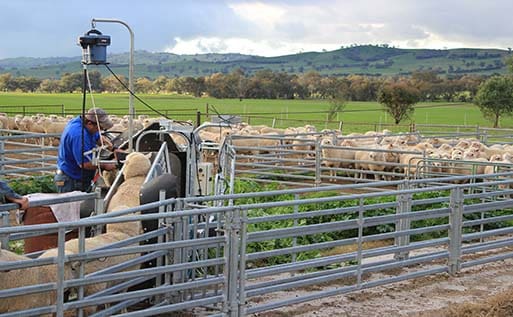Latest listings on Jobs Central recruitment page:
- Overseer / station hand – Vic
- Quality assurance manager, Gingin Abattoir – prime meat
- Qualified shearers for instructor positions – South West TAFE
- Station hand + partner – Emerald, Qld
- Sales development, crop farm management – via Rimfire
- Pen rider, Myola Feedlot – Bindaree Beef Group
- Administration & finance officer, Meat – Mort & Co
- Feeding/milling team operator, Chinchilla – Stanbroke
- 2020 positions – Cunningham Cattle Co
- Farmhand/station hand, NSW – Banyandah Pastoral Co
Click here to access these and other exciting meat and livestock supply chain jobs currently listed on Jobs Central.

WHENEVER people are working in potentially hazardous environments, which can often be the case in the meat and livestock supply chain, it is important that a high degree of alertness be maintained in order to minimise the risk of accidents and mistakes.
However, it is often the case that staff can quickly become weary from both the physical exertion and concentration that their work often demands, so managers need to be conscious of the condition of their employees and know how to reduce levels of fatigue, where possible.
Fatigue is a significant risk factor
Worker fatigue has been identified as a serious issue in Australia. It is more than feeling tired and drowsy, but rather a state of mental and/or physical exhaustion which reduces a person’s ability to perform work safely and effectively.
It is often caused by long hours, high levels of concentration, disrupted sleep patterns caused by irregular shifts, stress and physical labour.
According to a 2016 PhD study by Dr Margaret Chan of the University of Sydney, tiredness is a major contributor to the risk of incidents occurring in the workplace.
Her research showed that previously identified factors like failure to use equipment or failure by individual workers to follow safety procedures are heavily influenced by fatigue.
“If you eliminate or reduce fatigue, you also eliminate other so-called ’causes’ of accidents,” Dr Chan said.
Previous research also showed fatigue could cause performance impairment equivalent to or greater than a blood alcohol concentration of 0.10 percent. The legal limit to drive a vehicle in most states is half that: 0.05 percent.
Longer-term health effects of fatigue that have been identified include heart disease, diabetes, anxiety, high blood pressure and depression.
How to manage worker fatigue
Consequently, it is essential that employers in the cattle and beef supply chain actively try to curtail fatigue in their workforce to ensure that workplaces are as safe and functional as possible.
Researcher Dr Margaret Chan says that this requires a more substantial focus on the recovery process.
“Managers should ensure workers take regular breaks from work, and schedule shift rosters to allow the body to adapt to the circadian rhythm.
“They should also provide facilities allowing workers to recover from the fatigue and stress that comes with working in a high-risk environment,” she said.
Safe Work Australia identifies several steps for managers to take to manage worker fatigue.
Firstly, employees should be monitored for signs of tiredness, which can include an inability to concentrate, reduce hand-eye coordination, and behavioural changes.
Other symptoms include impaired decision-making and judgement, short-term memory problems and increased rates of unplanned absence.
The risks associated with fatigue can be regulated by scheduling demanding work to avoid high-fatigue times of day (usually between 2pm and 4pm); avoiding excessive exposure to extreme environments; managing job rotation; and ensuring workers take consistent breaks.
Managing fatigue will ensure it does not contribute to health and safety risks in the cattle and beef industry workplace.
Source: Meat Processors Pty Ltd



Margaret Chan refers to the circadian rhythm. There comes a time in life when environmental adaptability slows or stops; after 40 years of age is common. Even in the young, dangerous fatigue is possible.
Though not strictly ‘scientific in academia’ research gives much for thinking about, as would Margaret’s PhD thesis.
Sheep Central’s report doesn’t mention cortisol (Margaret may have), which is a crucial element in the adverse effects of presuming the ‘circadian rhythm’ is readily adaptable.
Quality of sleep may include biological ‘issues’. So ‘just getting sleep’ may not be enough to stop abnormal fatigue and certainly not chronic fatigue syndrome.
Fatigue is a very much under-emphasised cause of injury, and a story-teller in our lives and abuse of our lives. If you want to stay safe, avoid TV in the bedroom, or sleeping near one, late nights, alcohol, anxiety and much more. A micro-sleep while driving is a significant symptom.
If you have fatigue symptoms address them with professionals and lifestyle change. If you observe it in others, tell them and suggest they seek more information.